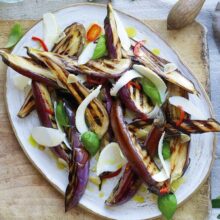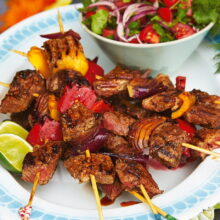Grilling Steak on a BBQ – Cooking Safety Tips

When you’re grilling steak on a BBQ, it’s important to follow some safety tips. These simple steps will keep you and your family safe from food poisoning.
Wash your hands and utensils before and after handling raw meat, poultry and seafood. Don’t let vegetables touch the juices from raw meat, and don’t put cooked foods on utensils or plates that were used for raw meat.
1. Don’t Wash Your Meat
It was once a common practice to wash meat in hot water, but today, food safety experts recommend against it. It’s not only unnecessary for removing bacteria, but it can actually increase your risk of food poisoning.
Raw meat may contain bad bacteria (food-borne pathogens) like Salmonella, Listeria, and Campylobacter jejuni. These bacteria can spread to anything that raw meat touches, including other foods, surfaces and kitchen tools.
Rinsing meat before cooking can spread these pathogens to other foods, utensils and surfaces in your kitchen and increase your risk of foodborne illness.
The best way to reduce your risk of getting sick from foodborne disease is to cook meat to the right temperature and don’t allow it to cross-contaminate other foods or utensils. Rinsing meat before cooking also does little to remove the natural bacteria that’s on it.
2. Don’t Let Vegetables Touch Raw Meat
When grilling a steak, be careful not to let any vegetables touch the raw meat. This is because bacteria from the raw meat can spread to the vegetables and make you sick.
It’s especially important to keep the raw meat and veggies separate when it comes time to serve. Using a separate plate for the meat and a clean one for the veggies will help prevent cross contamination.
Also, be sure to wash your hands after touching raw meat and before eating any of it. This helps remove germs that might make you sick, and helps to protect yourself and your family from food poisoning.
To avoid cross-contamination, use separate cutting boards and knives for meat and veggies. If possible, sanitize your cutting board and knife after each use.
3. Don’t Overcook Your Steak
Steaks can be delicate, so it’s important to not overcook them. Cooking them too much can result in dry, tough meat that doesn’t taste good.
To keep your steaks from overcooking, use a thermometer when grilling to ensure you’re getting the internal temperature you want. The ideal temperature is 130 degrees for rare, 135 degrees for medium-rare, 145 degrees for medium and 150 degrees for well done.
Once you’ve grilled your steak, let it rest for about 5 minutes to allow the juices to redistribute and for it to cool down. This also helps the steak retain its delicious flavors and texture.
One of the most common mistakes that grillers make is overcooking their steaks. If you’re not using a thermometer, try using a metal cake tester or skewer to check if your steak is done.
4. Don’t Leave Your Steak Out for Long
If your steak is left out at room temperature for long periods of time it can quickly become contaminated with harmful bacteria. These bacteria can cause serious illnesses and food poisoning.
Luckily, there are many ways to avoid this problem. First, you should always use a food thermometer to ensure that your steak is cooked to perfection.
Another thing you should do is make sure that your steak is properly seasoned before you grill it. This is important because it can help prevent the meat from becoming dry and tough on the outside.
Lastly, you should never leave your steak out for more than two hours after cooking it. This is because bacteria can grow very quickly when they are at this temperature range.


